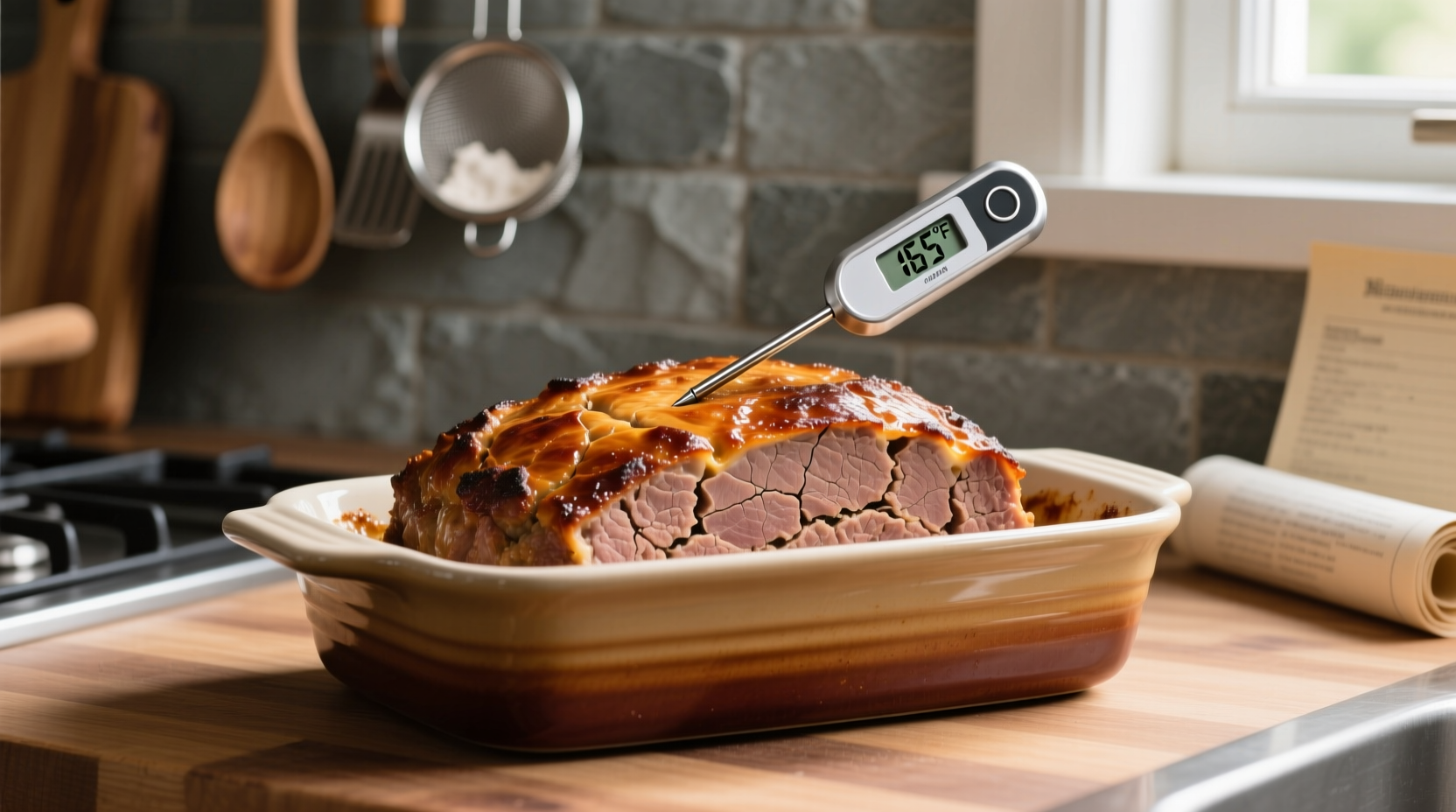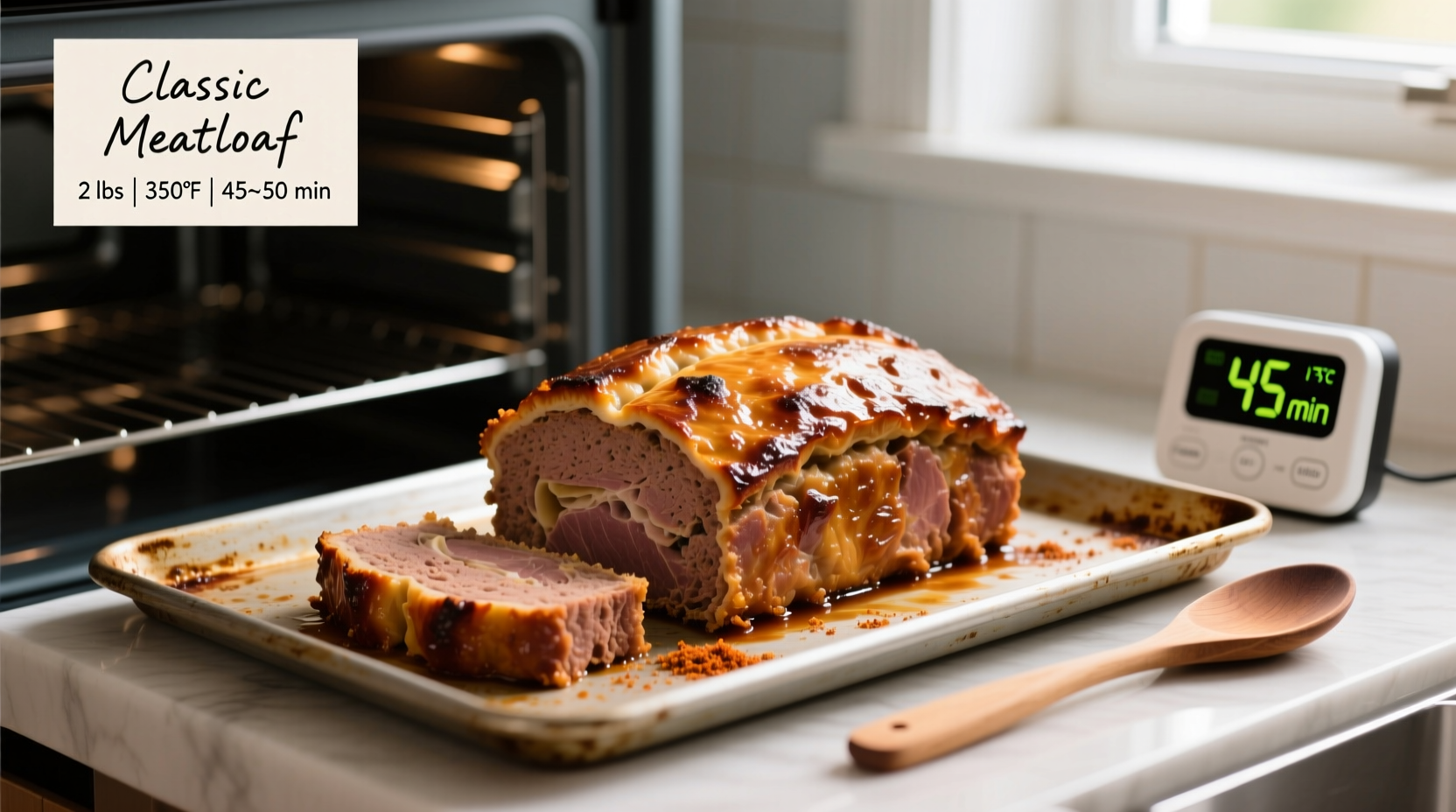For a 2-pound meatloaf cooked at 350°F (175°C), the ideal cooking time is 55-65 minutes until it reaches a safe internal temperature of 160°F (71°C). Always verify with a meat thermometer inserted into the center for food safety.
The Perfect Cooking Guide for Your 2-Pound Meatloaf
Nothing beats the comforting aroma of meatloaf baking in the oven, but getting the timing right for your 2-pound creation is crucial for both safety and flavor. Many home cooks struggle with undercooked centers or dry, overcooked results. This guide delivers precise timing based on food science and professional kitchen experience, so you can consistently achieve moist, flavorful meatloaf that's perfectly cooked through.
Why Cooking Time Matters for Food Safety
Ground meats like those used in meatloaf require special attention because bacteria can be distributed throughout the mixture during preparation. Unlike whole cuts of meat where surface cooking eliminates pathogens, ground meat needs to reach a specific internal temperature to ensure safety. The USDA Food Safety and Inspection Service emphasizes that ground beef must reach 160°F (71°C) to eliminate harmful bacteria like E. coli and Salmonella.
| Meatloaf Weight | Recommended Oven Temp | Approximate Cooking Time | Required Internal Temp |
|---|---|---|---|
| 1 lb | 350°F (175°C) | 35-45 minutes | 160°F (71°C) |
| 1.5 lbs | 350°F (175°C) | 45-55 minutes | 160°F (71°C) |
| 2 lbs | 350°F (175°C) | 55-65 minutes | 160°F (71°C) |
| 2.5 lbs | 350°F (175°C) | 65-75 minutes | 160°F (71°C) |
Your Step-by-Step Meatloaf Cooking Timeline
Preparation Phase (10-15 minutes)
Before your meatloaf even enters the oven, proper preparation sets the stage for success. Combine your ground meat mixture gently—overmixing leads to dense texture. Shape your 2-pound loaf to a consistent 4-5 inch width for even cooking. Place it in a shallow baking dish or on a rack over a baking sheet to allow air circulation. Pro tip: Create a slight indentation along the top center to prevent doming during cooking.
Cooking Phase (55-65 minutes)
Preheat your oven to 350°F (175°C) with the rack positioned in the center. Place your meatloaf in the oven and set a timer for 45 minutes. At the 45-minute mark, check the internal temperature. For a standard 2-pound loaf, you'll typically need 10-20 more minutes. Remember that oven temperatures can vary by as much as 25°F—using an oven thermometer ensures accuracy.

Temperature Verification (Critical Step!)
Never rely solely on cooking time—always verify with a reliable instant-read thermometer. Insert it into the thickest part of the meatloaf, avoiding any pan or rack. The USDA Food Safety and Inspection Service confirms that 160°F (71°C) is the minimum safe temperature for ground beef products. At this temperature, the meat will be slightly pink but completely safe to eat. If you prefer no pink, you can cook to 165°F (74°C), but be aware this may result in drier meat.
Resting Phase (10-15 minutes)
Resist the urge to slice immediately! Allowing your meatloaf to rest for 10-15 minutes after cooking serves two critical purposes: it lets the juices redistribute throughout the loaf (preventing dryness), and the internal temperature will continue to rise 5-10 degrees during this period (known as carryover cooking). This resting time transforms your meatloaf from merely cooked to perfectly textured.
Factors That Affect Your Meatloaf's Cooking Time
While 55-65 minutes at 350°F works for most 2-pound meatloaves, several variables can impact actual cooking time:
- Oven accuracy: Many home ovens run hotter or cooler than indicated. An oven thermometer costs just a few dollars but ensures precision.
- Meat mixture composition: Higher fat content cooks faster than lean mixtures. Adding vegetables or binders affects heat conduction.
- Starting temperature: Meatloaf placed in the oven straight from the refrigerator takes longer than room-temperature mixture.
- Pan material: Dark metal pans conduct heat faster than glass or ceramic dishes.
- Oven type: Convection ovens typically require 25°F lower temperature or 25% less time than conventional ovens.
Avoid These Common Meatloaf Mistakes
Even with perfect timing, these errors can ruin your meatloaf:
- Skipping the thermometer: Visual cues alone can't confirm safety. Undercooked ground meat risks foodborne illness.
- Overmixing: Leads to tough, dense texture rather than tender meatloaf.
- Cutting too soon: Slicing before resting causes juices to run out, resulting in dry meatloaf.
- Using only lean meat: Some fat (15-20%) is essential for flavor and moisture—consider blending meats.
When to Adjust Standard Cooking Times
While the standard 55-65 minute guideline works for most situations, these scenarios require adjustments:
- Cold ingredients: If your meat mixture was refrigerated, add 5-10 minutes to cooking time
- Added moisture: Extra vegetables or liquid ingredients may extend cooking time by 5-10 minutes
- Convection oven: Reduce temperature to 325°F or shorten time by 15-20%
- Meatloaf shape: A tall, narrow loaf cooks faster than a wide, flat one of the same weight
Remember that food safety should always trump perfect timing. If your meatloaf reaches 160°F before the expected time, remove it immediately. If it hasn't reached temperature after 65 minutes, continue checking every 5 minutes until safe.
Expert Tips for Flavorful, Moist Meatloaf Every Time
Professional chefs use these techniques to elevate their meatloaf beyond basic cooking:
- Layer flavors: Sauté onions, garlic, and herbs before adding to the meat mixture for deeper flavor
- Bind wisely: Use soaked breadcrumbs rather than dry for better moisture retention
- Temperature control: Keep all ingredients cold until mixing to prevent fat from melting prematurely
- Glaze application: Add ketchup-based glazes during the last 15-20 minutes to prevent burning
- Resting importance: That 10-15 minute rest isn't optional—it transforms texture dramatically
Storing and Reheating Leftovers Safely
Proper handling of leftovers is just as important as cooking time for food safety. The USDA recommends:
- Cool meatloaf to room temperature within 2 hours of cooking
- Store in airtight containers in the refrigerator for up to 3-4 days
- Reheat to 165°F (74°C) before serving
- Freeze for longer storage (up to 3-4 months)
When reheating slices, place them in a baking dish with a splash of broth or sauce, cover with foil, and heat at 325°F until warmed through. This method preserves moisture far better than microwave reheating.
Final Thoughts on Perfect Meatloaf Timing
Mastering the cooking time for your 2-pound meatloaf combines understanding food science with practical kitchen experience. While the standard 55-65 minute guideline at 350°F provides an excellent starting point, always prioritize internal temperature over the clock. With a reliable thermometer and attention to the factors that affect cooking time, you'll consistently produce safe, moist, and flavorful meatloaf that satisfies both your taste buds and food safety standards. Remember that cooking is both science and art—the precision of timing meets the creativity of seasoning for a truly satisfying result.
How do I know when my 2-pound meatloaf is done without a thermometer?
While a thermometer is strongly recommended for food safety, if unavailable, check for clear juices when pierced with a fork (not pink), firm texture when pressed, and the meat pulling away slightly from the sides. However, these methods are less reliable than temperature verification, and undercooked ground meat poses health risks.
Can I cook a 2-pound meatloaf at 375°F instead of 350°F?
Yes, but reduce cooking time to 45-55 minutes. Higher temperatures cook faster but increase the risk of dryness on the outside before the center reaches safe temperature. Always verify with a thermometer regardless of oven temperature.
Why does my meatloaf take longer than the recommended time?
Several factors could cause longer cooking times: oven running cooler than indicated, starting with cold ingredients, using a glass baking dish instead of metal, adding extra moisture-rich ingredients, or creating a denser meat mixture through overmixing. Always verify with a thermometer rather than relying solely on time.
Should I cover my meatloaf while baking?
Covering with foil for the first 45 minutes prevents excessive browning, then remove for the final 15-20 minutes to develop a crust. However, covering the entire cooking time may result in a steamed texture rather than baked. For a 2-pound meatloaf, partial covering works best for optimal texture.
What's the minimum internal temperature for meatloaf to be safe?
According to the USDA Food Safety and Inspection Service, ground meats including meatloaf must reach 160°F (71°C) to be safe. This temperature destroys harmful bacteria like E. coli that may be present in ground beef. Do not rely on color alone to determine doneness.











 浙公网安备
33010002000092号
浙公网安备
33010002000092号 浙B2-20120091-4
浙B2-20120091-4